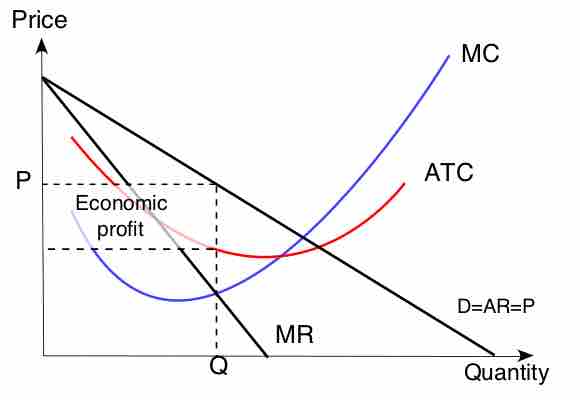Monopoly
A monopoly exists when a specific enterprise is the only supplier of a particular commodity. Monopolies have little to no competition when producing a good or service. A monopoly is a business entity that has significant market power (the power to charge high prices).
Inefficiency in a Monopoly
In a monopoly, the firm will set a specific price for a good that is available to all consumers. The quantity of the good will be less and the price will be higher (this is what makes the good a commodity). The monopoly pricing creates a deadweight loss because the firm forgoes transactions with the consumers. The deadweight loss is the potential gains that did not go to the producer or the consumer. As a result of the deadweight loss, the combined surplus (wealth) of the monopoly and the consumers is less than that obtained by consumers in a competitive market. A monopoly is less efficient in total gains from trade than a competitive market.
Monopolies can become inefficient and less innovative over time because they do not have to compete with other producers in a marketplace. For private monopolies, complacency can create room for potential competitors to overcome entry barriers and enter the market. Also, long term substitutes in other markets can take control when a monopoly becomes inefficient.
Market Failure
When a market fails to allocate its resources efficiently, market failure occurs. In the case of monopolies, abuse of power can lead to market failure. Market failure occurs when the price mechanism fails to take into account all of the costs and/or benefits of providing and consuming a good. As a result, the market fails to supply the socially optimal amount of the good. A monopoly is an imperfect market that restricts output in an attempt to maximize profit . Market failure in a monopoly can occur because not enough of the good is made available and/or the price of the good is too high. Without the presence of market competitors it can be challenging for a monopoly to self-regulate and remain competitive over time.

Imperfect competition
This graph shows the short run equilibrium for a monopoly. The gray box illustrates the abnormal profit, although the firm could easily be losing money. A monopoly is an imperfect market that restricts the output in an attempt to maximize its profits.